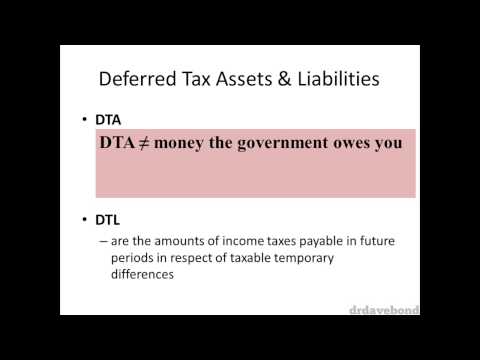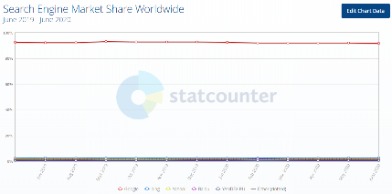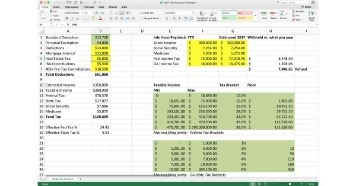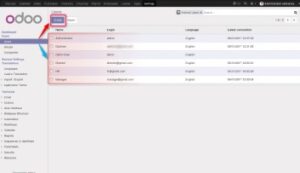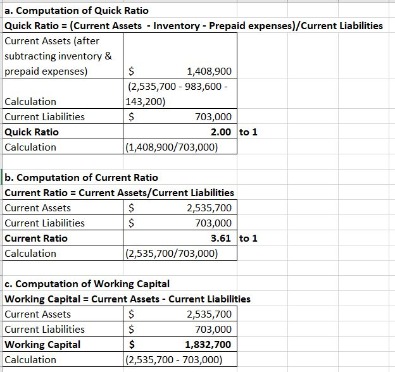
Using our example above, let’s say of the $15,000 in total assets, $8,000 is in current assets. A current asset is cash or something that can easily be converted to cash, such as accounts receivable and short-term investments. Accounting and bookkeeping can be complex, time-consuming, and tedious. how to write an invoice – common types of invoices Establishing robust accounting practices and processes can help small businesses be more financially organized, tax-ready, and profitable in the long run. Make your life easier by using a unified accounting project management solution to track expenses, generate custom reports, and send invoices automatically.
The more than 1,800 test questions will improve your retention and help you go from memorizing to understanding. Our Practice Quizzes will help you assess your understanding of each Explanation and improve your retention. These are a great warm-up for our Quick Tests which contain more than 1,800 questions with solutions. Therefore, you have to sell 6,000 2x4s in order to break even for the month.
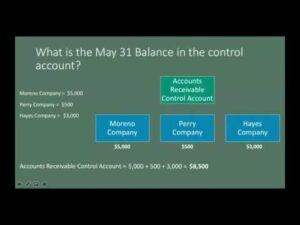
When to use accrual accounting
Try Shopify for free, and explore all the tools you need to start, run, and grow your business. Join millions of self-starters in getting business resources, tips, and inspiring stories in your inbox. Take the stress out of sales tax in the United States with insights and collection built into your admin. Our badges and points will help you stay motivated and celebrate your achievements. Earn our unique badges and points as you track your progress and complete various milestones. Our intuitive progress tracking will help you visualize your current progress and pick up where you left off.
To ensure that you receive the benefit of tax write-offs and deductions available to your company, keep a record of all expenses. And your relationship with your accountant and bookkeeper doesn’t need to revolve around tax time either. “Even if everything you need to know about the income statement you’re busy, stay in touch with your accounting team,” said Ethan Howell, co-owner of Florida Environmental.
This means your equity — the total of your combined contributions and profits you have not taken out of the business in the form of draws and distributions — is $10,000. You very likely have a healthy and profitable business, assuming you are not contributing vast amounts of resources to the business to keep it afloat. We believe everyone should be able to make financial decisions with confidence. When setting your financial goals, consider three distinct elements — the past, present, and future. Going full steam ahead without a financial forecast is a waste of time and money. Start by documenting expenses, then classify them into appropriate categories such as bill payments, vendors, administration, or miscellaneous.
What Are Accounting Methods?
- Once your business is registered and starts making transactions regularly, it’s time to prepare the bookkeeping system for your business.
- Keep in mind income is recorded once received and expenses are paid.
- The majority of small business owners and start-up founders are on their toes almost every day.
- To separate your business’s finances from your personal money, open a separate bank account for your business.
Cash-basis accounting records income when received and transactions when paid. Accrual accounting records financial transactions even if they’re not paid yet. Nevertheless, businesses looking to combine the two methods can opt for modified cash-basis accounting. This allows them to view short-term cash transactions and long-term financial transactions related to their business. When performing accrual accounting, a double-entry accounting system is highly recommended.
• Organize the Records
Make smarter decisions and run a more what’s in an auditor’s report efficient business by leveraging your business data. Shopify’s online invoice generator makes your life easier when it comes to billing and collecting money.
Stay organized, clean up the books
Reconciliation lets you verify cash flow, spot discrepancies or missing funds, and prevent fraud. It’s a good idea for business owners to keep records of everyday expenses they incur in the company. Instead of calculating expenses every two weeks for payroll purposes, focus on every day or every week. This can help you have a better idea of where finances are each week and how much money you’ll need to budget for in the upcoming weeks.
It’s a discipline that can become a central driver of your small business’s performance. Here’s one of the often-overlocked small business accounting tips for the early days, pay yourself properly. You’ll also need to decide whether to use cash-based accounting or accrual accounting. When planning how much it takes to keep a small business running, the numbers can get complicated. Devise an accurate system of expenses and regular obligations so you know exactly the minimum income you need every month.

